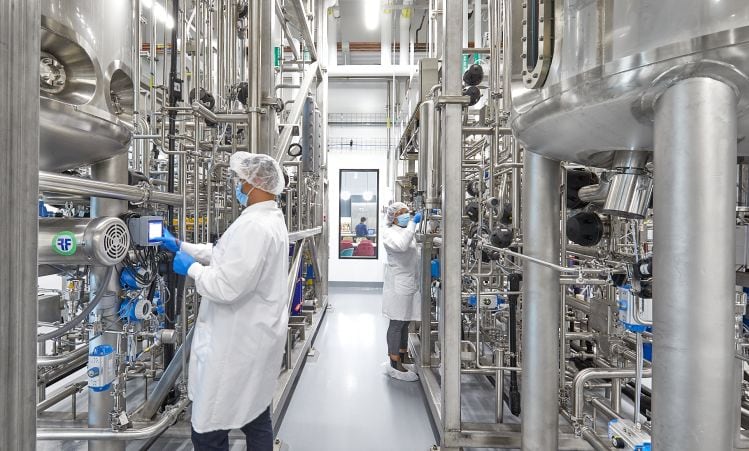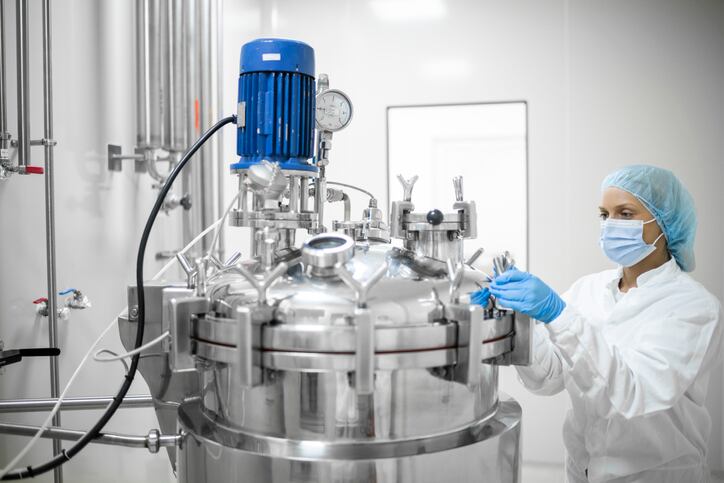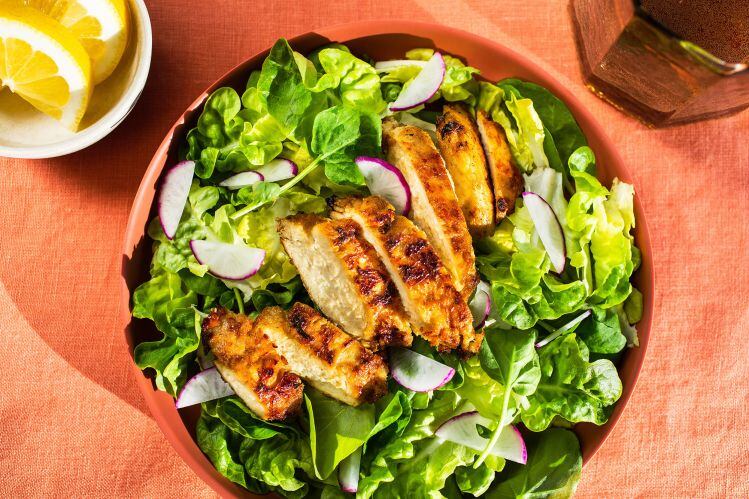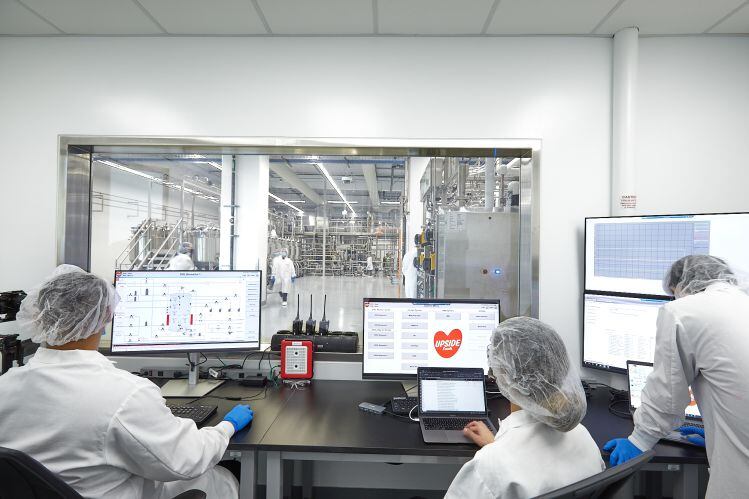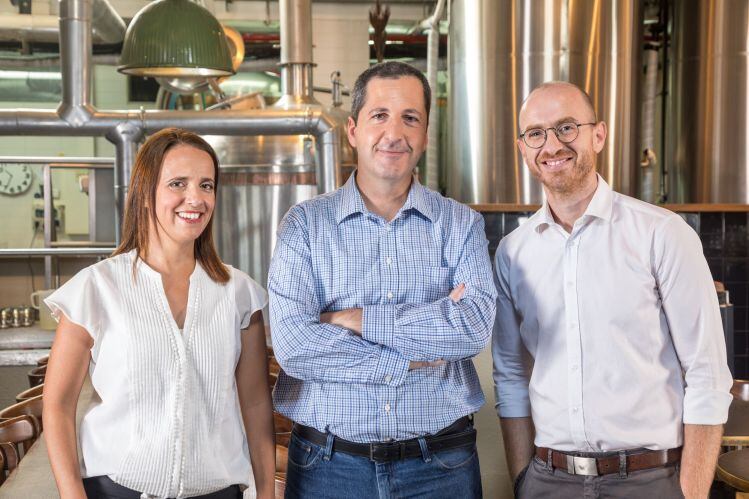The move is significant, given that it defeats the purpose of growing meat outside of an animal if you need animal-derived components to produce it, says the company, which is gearing up for commercial production from a new facility in Emeryville, Calif., shortly, pending regulatory review.
“Eliminating the use of animal components has been a major goal for the entire cultivated meat industry since UPSIDE founded the industry in 2015, as animal components pose challenges to both the mission and economics of cultivated meat.”
What do cells need?
So how has it been done?
Cell cultured meat startups keep the composition of their cell media tightly under wraps, but in broad terms, media typically contains water, amino acids (lysine, arginine etc), sugars (glucose), salts, vitamins, buffering agents, culture aids and/or essential co-factors, proteins (albumin, transferrin etc) and growth factors (FGF, IGF, TGF etc), which send signals to encourage cells to do certain things such as proliferate or differentiate.
‘Eliminating FBS was a major target, but moving the entirety of a cell culture media to animal component free is a much larger deal’
UPSIDE worked out how to replace key components in fetal bovine serum (FBS) – a serum widely used in in vitro cell culture that’s derived from blood drawn from a bovine fetus after it’s removed from a slaughtered cow - some time ago, VP product development and regulation Eric Schulze, PhD, told FoodNavigator-USA.
However, the latest news reflects the fact that UPSIDE Foods has also managed to find non-animal sources of other cell-media components needed to grow meat outside of an animal, he explained.
“FBS is one component of what’s called a complete cell culture feed, and eliminating FBS was a major target, but moving the entirety of a cell culture media to animal component free is a much larger deal.
“To our knowledge we don’t know that anyone [else] has been able to do it for a scalable food production system.”
He added: “Animal components have been a mainstay of cell culture for decades, and removing them has proved to be an enormous technical challenge. The challenge is that animal components help cells grow very efficiently and effectively and are readily available, so there has been little need [for example in biopharma] to innovate to remove them beyond a few niche non-food uses.
“So just like the foods we eat, the nutrients contained in animal-derived materials are biologically complex, so decoding this complexity to produce a feed with the right nutrient balance to produce meat is a biological breakthrough.”
Proteins such as albumin and more expensive growth factors can be made through microbial fermentation (engineering microbes to express the proteins in fermentation tanks), he said, with significant progress being made on reducing costs by moving to food-, rather than pharma-grade protocols along with driving greater efficiency in the organisms.
“Industrial fermentation for microbial systems producing proteins or other components for cell culture has come down in cost significantly and has also become more consistent, [delivering] higher quality."
Key to success is not just about what nutrients cells need, but when to introduce them in the process
The key to success in cell media, added Schulze, is both nailing down exactly what nutrients your cells need (and then finding ways to produce the components cost effectively without animals), but also knowing when to introduce specific nutrients in the process.
“The second half of the challenge is to deploy them at the right time in a regimen where you're feeding cells that do not have a digestive tract."
‘Animal cells regardless of type all largely require the same basic components’
In its press release, UPSIDE Foods noted that, “while the initial demonstration of ACF cell feed was in select chicken products, UPSIDE is working to integrate ACF cell feed across its entire product portfolio over time.”
So, does this mean it has only worked out how to go ACF-free for cell-cultured/cultivated chicken?
According to Schulze: “Animal cells regardless of their type, all largely require the same basic components that can be deployed across our platform for different species. The difference will be in the balancing of the nutrients and when they are deployed in the regimen [which will vary from species to species].”
‘The process of designing media is anything but trial and error’
So how does UPSIDE Foods work out exactly what nutrients the different cell types it is working with need in what proportions, and when to introduce them, in an efficient manner?
“The process of designing media is anything but trial and error,” stressed Schulze. “It’s all about rational design.”
Reducing the cost of cell culture media
For cell-cultured meat to go mainstream, the cost of the media used to grow animal cells must come down. A lot. And that will require significant movement in the price and availability of recombinant proteins and growth factors. So how much progress is being made on this front?
